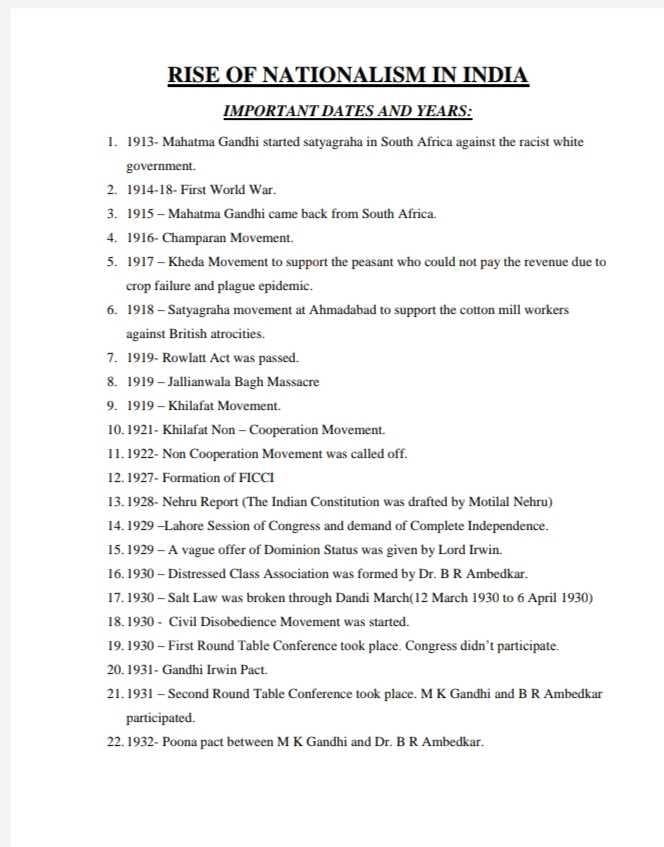Class 10 Exam > Class 10 Questions > can you provide the timeline Related: Chapte...
Start Learning for Free
can you provide the timeline
? Related: Chapter Notes: Nationalism in India
Most Upvoted Answer
can you provide the timeline Related: Chapter Notes: Nationalism in I...
Timeline: Nationalism in India
The timeline of Nationalism in India can be divided into three main phases:
1. Moderate Phase (1885-1905)
2. Extremist Phase (1905-1919)
3. Gandhian Phase (1919-1947)
Moderate Phase (1885-1905)
The moderate phase of the Indian National Movement was marked by the formation of the Indian National Congress (INC) in 1885. The main leaders during this period were Dadabhai Naoroji, Pherozeshah Mehta, and Gopal Krishna Gokhale. The objectives of the INC during this phase were:
- To obtain a greater share in the administration of the country
- To promote national unity and harmony
- To create public awareness about the problems of the country
- To develop a sense of self-respect and self-confidence among Indians
Extremist Phase (1905-1919)
The extremist phase of the Indian National Movement was marked by the emergence of leaders like Bal Gangadhar Tilak, Lala Lajpat Rai, Bipin Chandra Pal, and Aurobindo Ghosh. The objectives of the INC during this phase were:
- To attain Swaraj or self-rule
- To boycott foreign goods and promote Indian goods
- To propagate the idea of Swadeshi or self-sufficiency
- To use militant methods to achieve their objectives
Gandhian Phase (1919-1947)
The Gandhian phase of the Indian National Movement was marked by the emergence of Mahatma Gandhi as the leader of the movement. The objectives of the INC during this phase were:
- To achieve complete independence from British rule
- To use non-violent methods to achieve their objectives
- To promote Hindu-Muslim unity
- To improve the socio-economic conditions of the masses
Conclusion
The Indian National Movement was a long and complex process that lasted for several decades. The movement was marked by the emergence of several leaders who played a crucial role in shaping the course of the movement. The movement finally culminated in the independence of India in 1947.
The timeline of Nationalism in India can be divided into three main phases:
1. Moderate Phase (1885-1905)
2. Extremist Phase (1905-1919)
3. Gandhian Phase (1919-1947)
Moderate Phase (1885-1905)
The moderate phase of the Indian National Movement was marked by the formation of the Indian National Congress (INC) in 1885. The main leaders during this period were Dadabhai Naoroji, Pherozeshah Mehta, and Gopal Krishna Gokhale. The objectives of the INC during this phase were:
- To obtain a greater share in the administration of the country
- To promote national unity and harmony
- To create public awareness about the problems of the country
- To develop a sense of self-respect and self-confidence among Indians
Extremist Phase (1905-1919)
The extremist phase of the Indian National Movement was marked by the emergence of leaders like Bal Gangadhar Tilak, Lala Lajpat Rai, Bipin Chandra Pal, and Aurobindo Ghosh. The objectives of the INC during this phase were:
- To attain Swaraj or self-rule
- To boycott foreign goods and promote Indian goods
- To propagate the idea of Swadeshi or self-sufficiency
- To use militant methods to achieve their objectives
Gandhian Phase (1919-1947)
The Gandhian phase of the Indian National Movement was marked by the emergence of Mahatma Gandhi as the leader of the movement. The objectives of the INC during this phase were:
- To achieve complete independence from British rule
- To use non-violent methods to achieve their objectives
- To promote Hindu-Muslim unity
- To improve the socio-economic conditions of the masses
Conclusion
The Indian National Movement was a long and complex process that lasted for several decades. The movement was marked by the emergence of several leaders who played a crucial role in shaping the course of the movement. The movement finally culminated in the independence of India in 1947.
Community Answer
can you provide the timeline Related: Chapter Notes: Nationalism in I...


|
Explore Courses for Class 10 exam
|

|
Similar Class 10 Doubts
can you provide the timeline Related: Chapter Notes: Nationalism in India?
Question Description
can you provide the timeline Related: Chapter Notes: Nationalism in India? for Class 10 2025 is part of Class 10 preparation. The Question and answers have been prepared according to the Class 10 exam syllabus. Information about can you provide the timeline Related: Chapter Notes: Nationalism in India? covers all topics & solutions for Class 10 2025 Exam. Find important definitions, questions, meanings, examples, exercises and tests below for can you provide the timeline Related: Chapter Notes: Nationalism in India?.
can you provide the timeline Related: Chapter Notes: Nationalism in India? for Class 10 2025 is part of Class 10 preparation. The Question and answers have been prepared according to the Class 10 exam syllabus. Information about can you provide the timeline Related: Chapter Notes: Nationalism in India? covers all topics & solutions for Class 10 2025 Exam. Find important definitions, questions, meanings, examples, exercises and tests below for can you provide the timeline Related: Chapter Notes: Nationalism in India?.
Solutions for can you provide the timeline Related: Chapter Notes: Nationalism in India? in English & in Hindi are available as part of our courses for Class 10.
Download more important topics, notes, lectures and mock test series for Class 10 Exam by signing up for free.
Here you can find the meaning of can you provide the timeline Related: Chapter Notes: Nationalism in India? defined & explained in the simplest way possible. Besides giving the explanation of
can you provide the timeline Related: Chapter Notes: Nationalism in India?, a detailed solution for can you provide the timeline Related: Chapter Notes: Nationalism in India? has been provided alongside types of can you provide the timeline Related: Chapter Notes: Nationalism in India? theory, EduRev gives you an
ample number of questions to practice can you provide the timeline Related: Chapter Notes: Nationalism in India? tests, examples and also practice Class 10 tests.

|
Explore Courses for Class 10 exam
|

|
Signup to solve all Doubts
Signup to see your scores go up within 7 days! Learn & Practice with 1000+ FREE Notes, Videos & Tests.



























